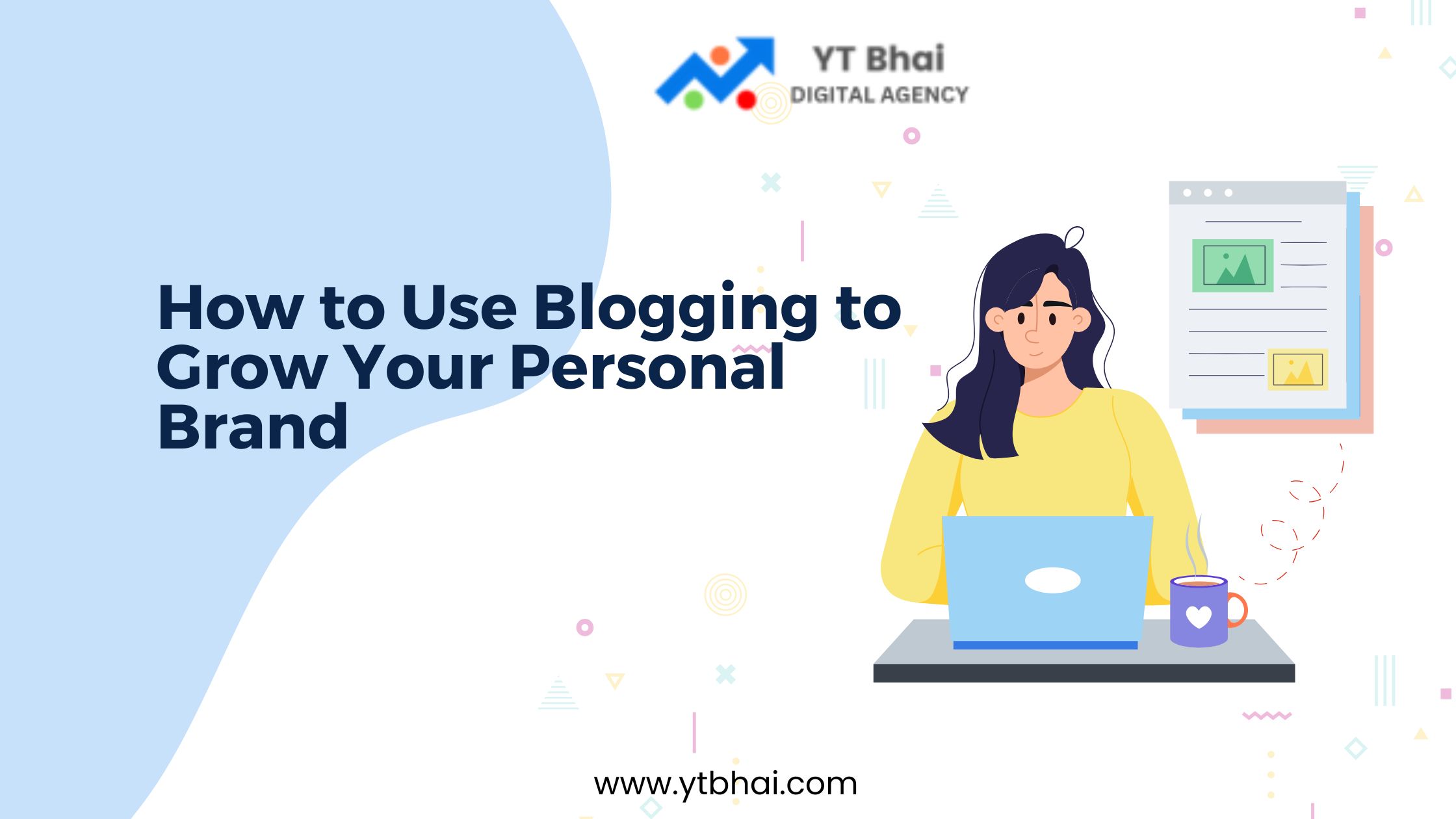
In today’s digital era, personal branding is more than just a buzzword—it’s an essential strategy for establishing your reputation, showcasing expertise, and building trust. Blogging is a powerful tool to grow your personal brand. It allows you to share insights, connect with your audience, and establish yourself as an authority in your niche. This article explores actionable steps to use blogging effectively to enhance your personal brand.
Why Blogging is Essential for Personal Branding
Blogging offers numerous benefits, including:
- Showcasing Expertise: Share your knowledge and insights to establish credibility.
- Engaging with Your Audience: Blogs provide a platform to connect and interact.
- Improving Online Visibility: SEO-friendly blogs boost search engine rankings.
- Building Trust: High-quality content builds confidence in your skills and expertise.
Steps to Use Blogging for Personal Branding
1. Define Your Personal Brand
Before starting your blog, clarify your brand identity.
- Identify Your Niche: Focus on areas where you have expertise or passion.
- Understand Your Audience: Research who you want to reach and their needs.
- Develop a Unique Voice: Create a tone and style that reflects your personality.
2. Set Clear Goals for Your Blog
- Positioning Goals: Are you looking to become an industry expert or a thought leader?
- Engagement Goals: Do you aim to build a community or drive discussions?
- Monetization Goals: Plan if you want to generate income through affiliate marketing, ads, or partnerships.
3. Choose the Right Blogging Platform
Select a platform that aligns with your goals. Popular options include:
- WordPress: Great for flexibility and scalability.
- Medium: Perfect for writers focusing on storytelling.
- Substack: Ideal for subscription-based blogging.
| Platform | Key Features | Best For |
|---|---|---|
| WordPress | Customization, SEO plugins | Professional branding |
| Medium | Simplicity, built-in audience | Writers and storytellers |
| Substack | Subscription model, newsletters | Monetization |
4. Create High-Quality Content
Content is the backbone of your personal brand.
- Write for Your Audience: Address their pain points, interests, and goals.
- Use Storytelling: Share personal experiences to make your content relatable.
- Be Consistent: Post regularly to keep your audience engaged.
5. Optimize Your Blog for SEO
Search Engine Optimization (SEO) ensures your blog reaches the right audience.
- Focus on Keywords: Use tools like Google Keyword Planner to identify relevant terms.
- Optimize Headlines: Include your focus keyword in the title.
- Internal and External Links: Link to other relevant blogs and credible sources.
- Meta Descriptions: Craft concise summaries with your keyword for better visibility.
6. Promote Your Blog Effectively
Content promotion is as important as creation.
- Social Media: Share blog links on platforms like LinkedIn, Twitter, and Instagram.
- Email Marketing: Build a subscriber list to notify readers of new posts.
- Networking: Collaborate with other bloggers or industry experts to expand reach.
7. Engage with Your Audience
- Respond to Comments: Show readers that you value their feedback.
- Ask Questions: Encourage discussions to build community.
- Host Webinars or Live Q&A Sessions: Strengthen connections with your audience.
8. Leverage Analytics to Improve
Use tools like Google Analytics to track:
- Traffic: Monitor which posts drive the most visits.
- Engagement: Check metrics like time spent on page and bounce rate.
- Conversion Rates: Measure how well your blog achieves its goals.
Real-Life Examples of Personal Branding Through Blogging
1. Neil Patel
Neil Patel’s blog focuses on digital marketing, helping him become a globally recognized SEO expert.
- Key Takeaway: Consistency and in-depth content build trust and authority.
2. Marie Forleo
Marie Forleo uses her blog to empower entrepreneurs, combining motivational content with practical advice.
- Key Takeaway: A unique voice and authenticity resonate with audiences.
Table: Key Blogging Strategies for Personal Branding
| Strategy | Action Items | Benefits |
|---|---|---|
| Define Your Niche | Identify expertise, target audience | Clear focus, relevant content |
| Optimize for SEO | Use keywords, meta descriptions | Higher visibility, traffic |
| Consistent Posting | Schedule weekly or bi-weekly posts | Keeps audience engaged |
| Leverage Social Media | Share posts, engage with followers | Wider reach, brand recognition |
| Track Performance | Use analytics tools | Informed improvements |
Conclusion
Blogging is an invaluable tool for growing your personal brand. By creating high-quality content, optimizing for SEO, and engaging with your audience, you can establish yourself as a trusted authority in your field. Whether you’re a beginner or a seasoned professional, following these strategies will set you on the path to success.
FAQs
1. How often should I post blogs to grow my personal brand?
Consistency is key. Aim for at least one high-quality blog per week.
2. What’s the best way to promote my blog posts?
Share on social media, use email marketing, and collaborate with influencers.
3. How do I choose the right blogging platform?
Pick a platform based on your goals—WordPress for customization, Medium for simplicity, and Substack for monetization.
4. Can I grow my personal brand without focusing on SEO?
SEO enhances visibility, but engaging content and authentic interactions are equally important.
5. How long does it take to see results from blogging?
It varies. Most bloggers see noticeable results within 6-12 months of consistent effort.
